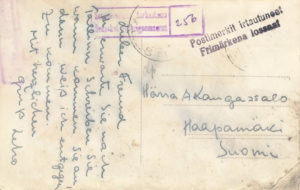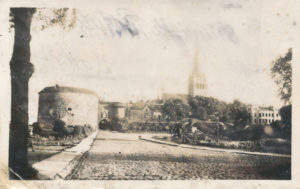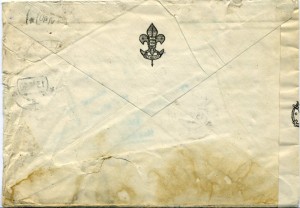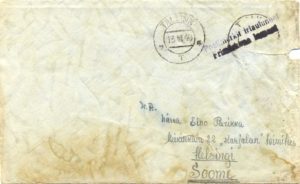| Crash site | Keri Island, Estonia |
| Airline | Aero O/Y |
| Aircraft | Junkers Ju 52 – OH-ALL – Kaleva |
| Route | Tallinn – Helsinki |
| Crew | 2 – 0 survivors |
| Passengers | 7 – 0 survivors |
The crash
The plane took off from Tallinn/Ülemiste airport at 13:54. Shortly afterwards two Soviet Ilyushin DB-3T bombers showed up and opened fire with machine guns. The defenceless airplane exploded and at 14:04 it crashed into the water 2-3 km northeast of Keri Lighthouse north of Prangli Island. Three Estonian fishing boats were in the area where they searched for survivors and parts from the wrecked plane. At 14:55 a Soviet submarine (Shstsha-301) arrived at the crash site. The fishing boats were searched, and all the salvaged items were confiscated by the Soviets. After picking up some further pieces from the wreck that were floating in the water the submarine left the scene. The submarine reported the incident to the Soviet naval base Kronstadt and advised that the confiscated material would later be transferred to torpedo boat Parga. The fishermen, however, had hidden some items in their cargo of fish. The chief of the Estonian military intelligence got these items the same day. According to a report there was a sealed diplomat bag, briefcases, money, clothes, ten aircraft parts, notebooks and account books, a German passport and a life jacket. The reason for shooting down a civilian passenger airliner was because the Soviets were in the process of a plan involving an invasion of the Baltic States (the Soviets invaded Estonia on 16 June). The Soviets found out that these plans had fallen into American hands, and that all these documents were onboard this plane. Therefore they would not allow the plane to escape to Finland.
The mail
On board was a large load of mail. The two French diplomats and the Amercian courier carried 227 kg of diplomatic mail. An unknown amount of ordinary mail was also on the plane. This mail came from the three Baltic States Estonia, Latvia and Lithuania. As mentioned above the Soviets confiscated some of the mail (100 kg). The fisherman had hidden some mail which was brought to Tallinn for drying and sorting. On 27 June 1940 the Post Office in Helsinki received a batch of mail for recipients in Finland (154 items from Estiona, 66 items from Latvia and 14 items from Lithuania). Another document dated 26 Juli 1940 lists 12 letters – all registered and sent from Estonia to Finland.
So far I have only recorded three items from this crash.
A.
 Finnish handstamp wih text in
Finnish handstamp wih text in
Finnish and Swedish language.
Black.
Size: ?
Text translation:
Stamps fallen off.
Examples of mail





